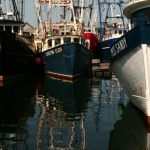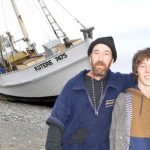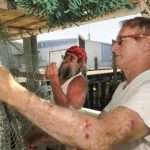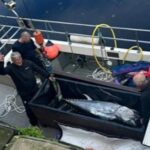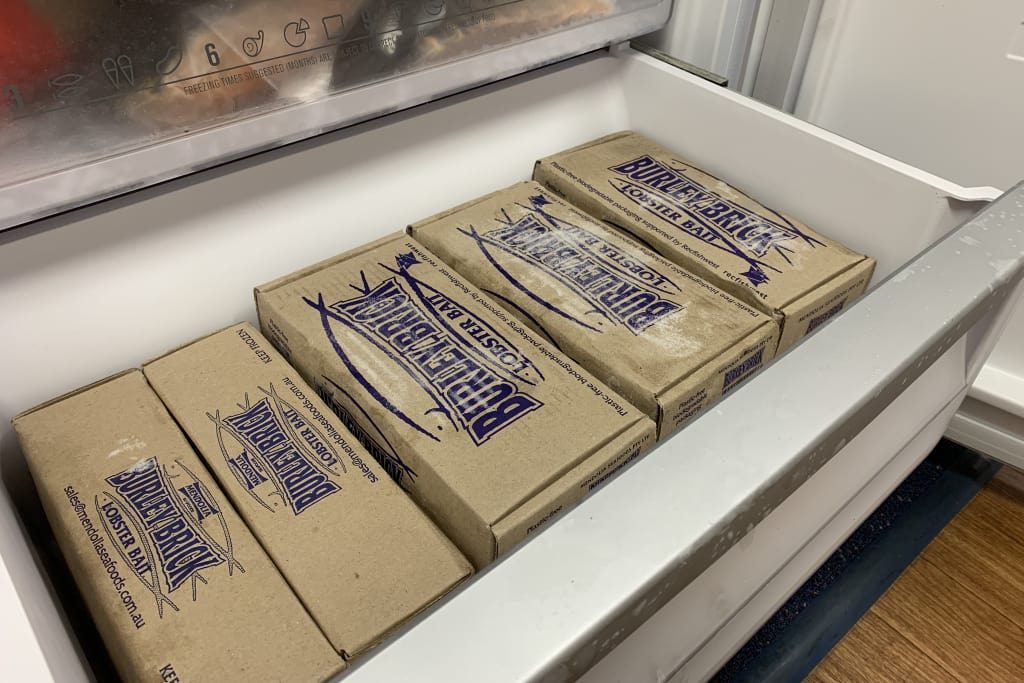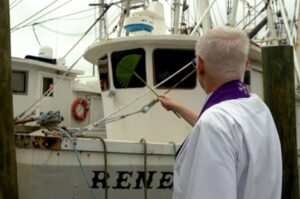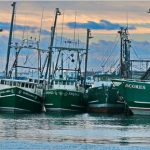Monthly Archives: October 2016
Push for new FISH-NL fishermen union an opportunistic ‘raid’ of FFAW, claims president of the Canadian Labour Congress
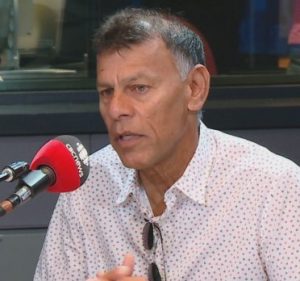 The president of one of Canada’s biggest labour groups says he’s justified in calling Ryan Cleary opportunistic for trying to start a new fishers union separate from the Fish, Food and Allied Workers Union (FFAW). Hassan Yussuff, president of the Canadian Labour Congress (CLC), wrote a letter to Cleary on Monday where he described the former MP’s attempts to start a new union as a “raid” on the current FFAW membership. Yussuff dismisses Cleary’s claim that the letter was harsh and included personal attacks. “He’s trying to raid that union to create his own union for his own purposes, in my view,” Yussuff told the St. John’s Morning Show. “We have a process in the CLC structure to address issues that members raise, and we have not received any complaint from the members of that union.” Read the story here 09:22
The president of one of Canada’s biggest labour groups says he’s justified in calling Ryan Cleary opportunistic for trying to start a new fishers union separate from the Fish, Food and Allied Workers Union (FFAW). Hassan Yussuff, president of the Canadian Labour Congress (CLC), wrote a letter to Cleary on Monday where he described the former MP’s attempts to start a new union as a “raid” on the current FFAW membership. Yussuff dismisses Cleary’s claim that the letter was harsh and included personal attacks. “He’s trying to raid that union to create his own union for his own purposes, in my view,” Yussuff told the St. John’s Morning Show. “We have a process in the CLC structure to address issues that members raise, and we have not received any complaint from the members of that union.” Read the story here 09:22
West Australian Government accused of basing decision not to reopen commercial shark fishery on politics, not science
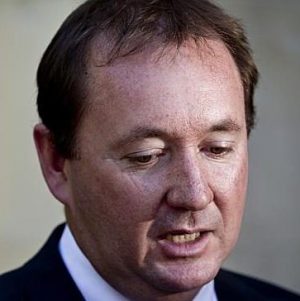 Fisheries Minister Joe Francis said the fishery would remain closed. “Reopening the metropolitan shark fishery is frequently touted as an indirect method of reducing white shark numbers and the risk of attacks. However, the evidence doesn’t support this,” he said in a statement. A spokeswoman for the fisheries department said Mr Francis’s comment was not based on a study by the department. The Western Australian Shark Fishing Association also believed politics was behind the Government’s decision. “It’s got nothing to do with the stock sustainability issue,” president Brian Scimone said. “It’d be a public thing, a political thing, a recreational thing.” Mr Scimone said shark numbers had built up due to a lack of fishing. “The public, the recreational fishing section, the Government, the fisheries associated with the Government, should start listening to the shark fishermen,” he said. “Bring our quotas back into consideration for use and let us do us our job in a sustainable fishery. Read the story here 08:21
Fisheries Minister Joe Francis said the fishery would remain closed. “Reopening the metropolitan shark fishery is frequently touted as an indirect method of reducing white shark numbers and the risk of attacks. However, the evidence doesn’t support this,” he said in a statement. A spokeswoman for the fisheries department said Mr Francis’s comment was not based on a study by the department. The Western Australian Shark Fishing Association also believed politics was behind the Government’s decision. “It’s got nothing to do with the stock sustainability issue,” president Brian Scimone said. “It’d be a public thing, a political thing, a recreational thing.” Mr Scimone said shark numbers had built up due to a lack of fishing. “The public, the recreational fishing section, the Government, the fisheries associated with the Government, should start listening to the shark fishermen,” he said. “Bring our quotas back into consideration for use and let us do us our job in a sustainable fishery. Read the story here 08:21
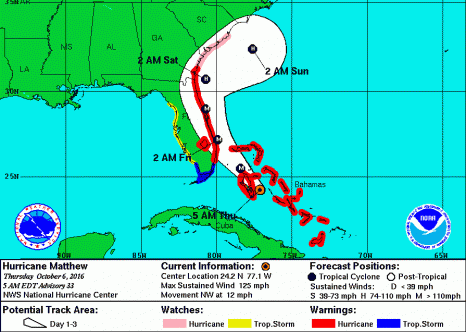
The Latest on Hurricane Matthew 0:500 EDT THU OCT 06 2016
CHANGES WITH THIS ADVISORY: The Hurricane Warning has been extended northward to Altamaha Sound, Georgia, and the Hurricane Watch has been extended northward to South Santee River, South Carolina. At 500 AM EDT (0900 UTC), the center of Hurricane Matthew was located near latitude 24.2 North, longitude 77.1 West. Matthew is moving toward the northwest near 12 mph (19 km/h), and this general motion is expected to continue today. A turn toward the north-northwest is expected tonight. On the forecast track, the eye of Matthew should pass near Andros Island and New Providence in the northwestern Bahamas early this morning, then pass near Grand Bahama Island late today, and move very close to the east coast of the Florida peninsula tonight through Friday night. Read the advisory here 07:18 Be prepared.
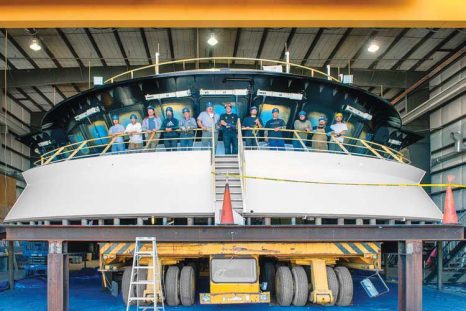
New Dakota Creek fishing ship will be first in U.S. since 1989
Commissioning a new ship costs a bundle. Ask Helena Park, CEO and founder of Fisherman’s Finest in Kirkland. She has hired Dakota Creek Industries in Anacortes to build a ship unlike one built in the United States in more than 30 years. Ms. Park, as everyone calls her, came to the U.S. from South Korea as a high school exchange student in 1973. She began working in commercial fishing in 1982. Three and a half decades later, at age 60, she’s looking at an $80 million bill for the building of America’s Finest, which will replace both ships in her fleet. Read the story here 16:48
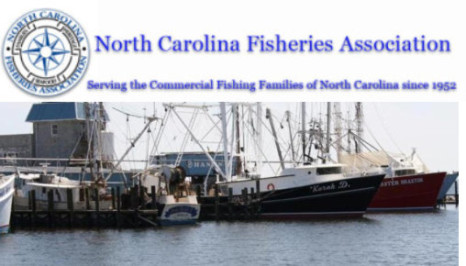
North Carolina Fisheries Association Weekly Update for October 3, 2016
Click here to read the Weekly Update, to read all the updates, Click here 16:17
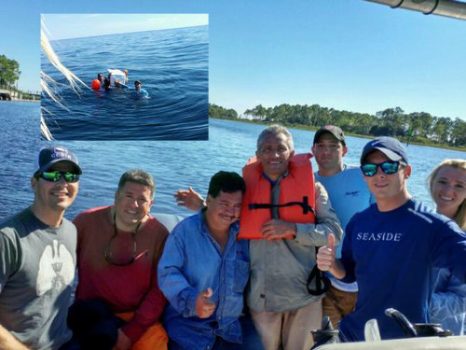
Fishermen found clinging to cooler 23 miles off Florida coast
In his 25 years of spearfishing, Dean Brodley had never seen anything like the situation that played out in the Gulf of Mexico on Sunday. Brodley put in his 28-foot power boat at Carrabelle, Fla., in the morning. Accompanying him on the boat were his friend Brandon Phillips, Phillips’ girlfriend and another friend. “We met down at Carrabelle early, loaded up with ice and everything. We were out and about, hitting several dive spots,” said Phillips, who began spearfishing about a year ago. “We were coming back in and were going to hit one more dive spot when I saw something I didn’t recognize.” Brodley said Phillips pointed to an object off the boat’s starboard. “He spotted what looked like a buoy, just floating. And on a whim, we headed in that direction just to see what it was,” said Brodley. “About halfway to them, we could see them splashing.” As they approached, the men couldn’t believe the sight of four men, exhausted, hanging onto a floating Igloo cooler. They were 23 miles offshore. Read the rest here 15:27
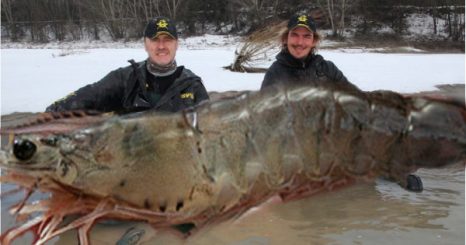
Canadian fishermen catch record-breaking 320-lbs shrimp
Rene Kirouac and his brother-in-law, Raymond Bergeron, were sailing aboard their trawl when they noticed some unusual movement along the rocks located near the coast. Upon approaching, they noticed that the movement was caused a giant shrimp, and they set out to capture the amazing creature. Realizing quickly that their fishing traps would be useless against a crustacean of this size, the two men rushed out of their hunting rifles to handle the huge animal. It was the most difficult catch of my life!” says Mr. Kirouac, an experienced shrimp fisherman. “It just refused to die! We fired at it from close range and knocked it repeatedly on the head with a metal shovel, but it had very little effect. It took sixteen .30-06 ammo before it stopped crawling, but we finally got it!” Biologists from the University of Quebec in Rimouski (UQAR), under the direction of Professor Denis Langevin, were quickly dispatched to take measurements of the animal and conduct various analyzes. “We took samples of the content of its stomach and the results are absolutely stunning,” Professor Langevin told reporters. “It seems that this particular prawn fed on fish that should have been its predators, such as cod, hake, Greenland halibut and flounder. We even found some seal and beluga meat! This specimen was clearly an abnormality in the food chain.” Read the rest here! 14:57
Bodega Bay – Optimism for the coming Dungeness crab season is building
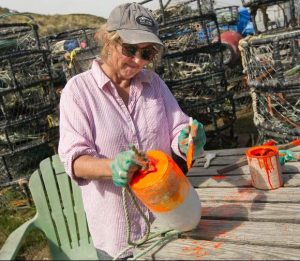 Optimism for the coming Dungeness crab season is building amid growing evidence that last year’s historic problems with toxic algae along the California coast may not be an issue again this year. The Nov. 15 commercial season opener is still nearly six weeks out, so there are no guarantees at this point. But testing of sample crabs suggests the fishery will likely open on time, making the shellfish available for the lucrative holiday markets, according to state officials. “We believe that the worst may be behind us,” state Sen. Mike McGuire, chairman of the Joint Legislative Committee on Fisheries and Aquaculture, said during a Tuesday hearing at the UC Davis Bodega Marine Laboratory. Fishermen and consumers, who have turned Dungeness crab into a must-have winter treat, can thank cooling ocean temperatures for the brightening forecast, officials said. Read the story here, nine images. 14:34
Optimism for the coming Dungeness crab season is building amid growing evidence that last year’s historic problems with toxic algae along the California coast may not be an issue again this year. The Nov. 15 commercial season opener is still nearly six weeks out, so there are no guarantees at this point. But testing of sample crabs suggests the fishery will likely open on time, making the shellfish available for the lucrative holiday markets, according to state officials. “We believe that the worst may be behind us,” state Sen. Mike McGuire, chairman of the Joint Legislative Committee on Fisheries and Aquaculture, said during a Tuesday hearing at the UC Davis Bodega Marine Laboratory. Fishermen and consumers, who have turned Dungeness crab into a must-have winter treat, can thank cooling ocean temperatures for the brightening forecast, officials said. Read the story here, nine images. 14:34

“Talking” Cod Found To Have Regional Accents
Professor Simpson: ‘There is a vast ecosystem on our doorstep which we barely understand – but all rely on. It’s time to get out there and listen.’ The academic, who discusses the research at an event organised by the National Environment Research Council this week, suggested boats could avoid spawning grounds at key times. He hopes to use the new ‘quiet’ ship, RRS Sir David Attenborough, the vessel the public wanted to name Boaty McBoatface, to continue his study. Recordings of American cod are very different to those from their European cousins, so there is a precedent. This species is highly vocal, with traditional breeding grounds established over hundreds or even thousands of years, so the potential for regionalism is there.’However, there is also growing concern that essential fish ‘gossip’ is being drowned out by noisy boats and drilling. Sounds travel far further under the sea as water is hundreds of times denser than air. The work could help shed light on whether southern fish will be able to understand their northern counterparts if they are forced to seek out the colder waters they prefer because of climate change. (rolls eyes) Read the story here You can listen to these cod talking by clicking here 13:47
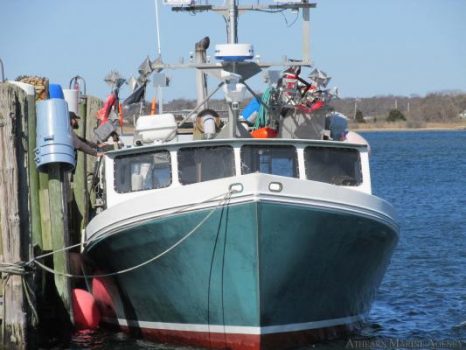
Athearn Marine Agency Boat of the Week: 47′ MDI Gillnet/Lobster, CAT 3406, Kubota 12 KW 3 Phase Generator
Specifications, information and 24 photo’s click here To see all the boats in this series, Click here 12:52
Four fishermen rescued off New Brunswick
 The Summerside-based Canadian Coast Guard Vessel, Cap Nord, was dispatched Tuesday evening after a New Brunswick fishing vessel reported it was taking on water. Sub. Lt. Blair Gilmore with the Canadian Coast Guard’s Joint Recue Coordination Centre, said all four persons onboard the Julie and Jolene were able to get safely onboard a “vessel of opportunity,” the fishing vessel Black Pearl that was in the area at the time. No one was injured and the four crewmembers were taken into port at Richibucto. The distress call from the Julie and Jolene was received around 7:30 p.m. Tuesday. The vessel subsequently sank. Link 12:31
The Summerside-based Canadian Coast Guard Vessel, Cap Nord, was dispatched Tuesday evening after a New Brunswick fishing vessel reported it was taking on water. Sub. Lt. Blair Gilmore with the Canadian Coast Guard’s Joint Recue Coordination Centre, said all four persons onboard the Julie and Jolene were able to get safely onboard a “vessel of opportunity,” the fishing vessel Black Pearl that was in the area at the time. No one was injured and the four crewmembers were taken into port at Richibucto. The distress call from the Julie and Jolene was received around 7:30 p.m. Tuesday. The vessel subsequently sank. Link 12:31
Canada’s Fishing Industry at Risk of Major Stock Collapse
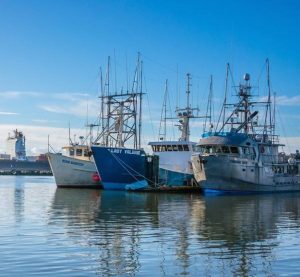 Canada’s $6-billion fishing industry is at risk of suffering another major stock collapse, the country’s Environment and Sustainable Development commissioner warned Tuesday. “We’re at potential risk for another stock to potentially collapse. It’s disconcerting that the department wasn’t aware of this, couldn’t wrap it up,” Julie Gelfand told reporters in Ottawa. In her fall report, Gelfand said 15 of Canada’s major fish stocks, which are considered to be critically at risk, are still being fished. Twelve of those stocks currently have no government rebuilding plan in place — a number the commissioner said they weren’t even aware of until she had completed her audit. “We gave them that number,” Gelfand said. Read the story here 10:47
Canada’s $6-billion fishing industry is at risk of suffering another major stock collapse, the country’s Environment and Sustainable Development commissioner warned Tuesday. “We’re at potential risk for another stock to potentially collapse. It’s disconcerting that the department wasn’t aware of this, couldn’t wrap it up,” Julie Gelfand told reporters in Ottawa. In her fall report, Gelfand said 15 of Canada’s major fish stocks, which are considered to be critically at risk, are still being fished. Twelve of those stocks currently have no government rebuilding plan in place — a number the commissioner said they weren’t even aware of until she had completed her audit. “We gave them that number,” Gelfand said. Read the story here 10:47
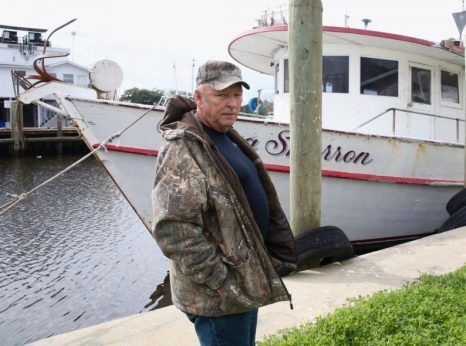
How a ‘rogue’ environmental group transformed (HIJACKED) American fisheries
One of the nation’s largest environmental groups — bankrolled with $50 million from the heirs to the Walmart fortune — has spent millions of dollars pushing a wholesale change in how the U.S. manages its fisheries, an AL.com investigation reveals. Critics blame the Environmental Defense Fund effort for hurting fishing communities on every coast, from Kake, Alaska, and Gloucester, Mass., to Bayou La Batre, Alabama. The group has pushed a system that turns the right to catch a pound of fish into a private commodity that can be bought and sold like a share of stock on Wall Street. The government then gives these shares to individual commercial fishermen, granting them the right to catch that fish, or lease or sell the right to catch it to another fisherman. EDF gained unprecedented access to the levers of power in 2008 when President Obama appointed the vice-chair of EDF’s board – Jane Lubchenko — as the head of the National Oceanic and Atmospheric Administration, which manages the nation’s fish stocks. Once in power, Lubchenko, a respected but little known fisheries professor in Washington State, enacted a national catch share policy that mirrored EDF’s longtime goals. Read this story. Read the story here 09:21
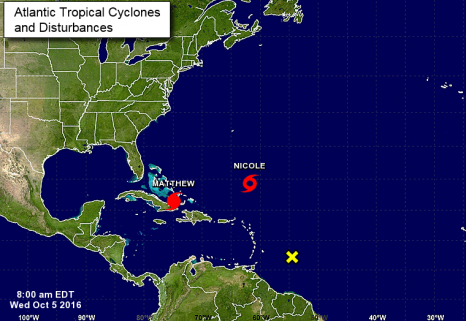
The Latest BULLETIN HURRICANE MATTHEW – 800 AM EDT WED OCT 05 2016
At 800 AM EDT (1200 UTC), the center of Hurricane Matthew was located near latitude 21.5 North, longitude 74.9 West. Matthew is moving toward the north-northwest near 10 mph (17 km/h). This motion is expected to continue today, followed by a northwestward turn tonight. On this track, Matthew will be moving across the Bahamas through Thursday, and is expected to be very near the east coast of Florida by Thursday evening. Read the update here You can reach the National Weather Service by scrolling down the page and clicking on the NWS icon. 08:34
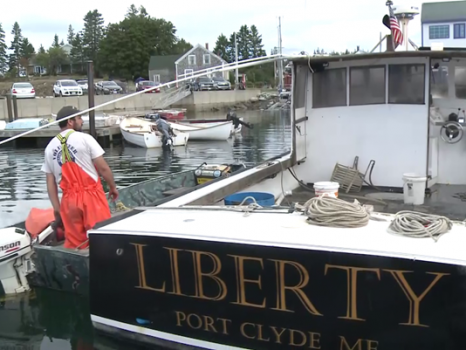
Reward offered for info leading to arrest in lobster boat sinking
Maine’s Operation Game Thief is offering a $2,000 reward for information that leads to an arrest and conviction of anyone involved in the sinking of Hooper’s lobster boat. “This is a senseless act that has happened to one of our own,” said Operation Game Thief Board of Directors Chairman Greg Sirpis. “The commercial lobstering community has a deep rooted tradition in Maine, and this will simply not stand. The Maine OGT Board of Directors is hopeful that someone will come forward and furnish information that will assist the Maine Marine Patrol in their investigation.” “We’re grateful for the tremendous support of the Operation Game Thief program,” said Marine Patrol Major Rene Cloutier. “While their focus is traditionally on poaching violations, their partnership with the Marine Patrol will help us pursue serious violations that undermine the ability of hard working fishermen to make a living on the water.” Tony Hooper said the whole ordeal is stressful for his family. He said he and his girlfriend just had a baby 10 days ago, and that they have “no money” because he has used up savings repairing the boat and has had limited income since mid-August. Video, read the rest here 18:02
Judge Sets Texas Straight on Oysters
 A local navigation board had no authority to issue an oysterman an exclusive lease to grow and harvest oysters in Galveston Bay, as only the state can do that, a Texas judge ruled. Three Galveston-based oyster companies sued Sustainable Texas Oyster Resource Management (STORM) in April 2014, calling the fisherman’s lease a land grab of state resources during a lean time in the oyster industry. Oysters are a $1 billion industry in the United States, and by far the largest share comes from cultivated, not wild, oysters. Tracy Woody, president of STORM and owner of Jeri’s Seafood in Smith Point, a small town on the bay, said his lease from the Chambers-Liberty Counties Navigation District was valid, and that he would use the waters for sustainable oyster harvesting, not for personal gain. “Should I pillage and plunder a public resource for personal gain?” Woody said in an interview Monday. “Or should I try to sustain it, without using any taxpayer money?” But in a 2-page order on Sept. 28, Galveston County Judge Lonnie Cox granted the Galveston companies summary judgment and voided the lease. Read the rest here 16:40
A local navigation board had no authority to issue an oysterman an exclusive lease to grow and harvest oysters in Galveston Bay, as only the state can do that, a Texas judge ruled. Three Galveston-based oyster companies sued Sustainable Texas Oyster Resource Management (STORM) in April 2014, calling the fisherman’s lease a land grab of state resources during a lean time in the oyster industry. Oysters are a $1 billion industry in the United States, and by far the largest share comes from cultivated, not wild, oysters. Tracy Woody, president of STORM and owner of Jeri’s Seafood in Smith Point, a small town on the bay, said his lease from the Chambers-Liberty Counties Navigation District was valid, and that he would use the waters for sustainable oyster harvesting, not for personal gain. “Should I pillage and plunder a public resource for personal gain?” Woody said in an interview Monday. “Or should I try to sustain it, without using any taxpayer money?” But in a 2-page order on Sept. 28, Galveston County Judge Lonnie Cox granted the Galveston companies summary judgment and voided the lease. Read the rest here 16:40
Fisherman pleads guilty to 39 albatross deaths
 A commercial fishing boat skipper who caused the death of 39 albatrosses refused to use bird-scaring devices because he had “nothing but f…… trouble with the things”, a court has been told. Daniel Joseph Smyth, 37, admitted in the Greymouth District Court on Tuesday to being the master of a vessel that failed to comply with seabird mitigation measures by ignoring instructions to use a streamer line while fishing with surface longlines. The Ministry for Primary Industries’ (MPI) legal counsel William Jennings said Smyth was fishing for southern bluefin tuna off the West Coast in April and failed to use a streamer line, a mandatory device designed to scare birds away from baited hooks. Read the story here 14:03
A commercial fishing boat skipper who caused the death of 39 albatrosses refused to use bird-scaring devices because he had “nothing but f…… trouble with the things”, a court has been told. Daniel Joseph Smyth, 37, admitted in the Greymouth District Court on Tuesday to being the master of a vessel that failed to comply with seabird mitigation measures by ignoring instructions to use a streamer line while fishing with surface longlines. The Ministry for Primary Industries’ (MPI) legal counsel William Jennings said Smyth was fishing for southern bluefin tuna off the West Coast in April and failed to use a streamer line, a mandatory device designed to scare birds away from baited hooks. Read the story here 14:03
Fish-NL – Ryan Cleary challenges FFAW to allow independent audit
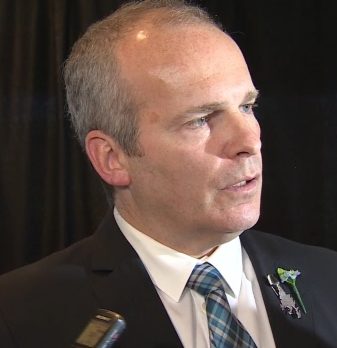 Aspiring labour leader Ryan Cleary has issued a challenge to the Fish, Food and Allied Workers union, saying he will walk away from his movement if the FFAW will allow an independent audit of its finances. But the union says that’s already being done. It’s the latest tactic by Cleary in his bid to form a new union exclusively for Newfoundland and Labrador fish harvesters, to be called the Federation of Independent Seafood Harvesters, or FISH-NL, and comes as the head of the Canadian Labour Congress strongly condemns Cleary’s efforts. “I will walk away from Fish-NL, I will walk away from this movement, period, if the FFAW agrees to allow a third party to go in and do a forensic audit of the FFAW, all government money going in, all fees that fish harvesters pay in,” Cleary told CBC News Tuesday. Cleary quickly added it’s a challenge he doesn’t expect will be accepted because “they have too much to hide.” The FFAW responded with a statement saying Cleary’s challenge is mute, because the union is already audited by an independent firm. Read the story here 13:32
Aspiring labour leader Ryan Cleary has issued a challenge to the Fish, Food and Allied Workers union, saying he will walk away from his movement if the FFAW will allow an independent audit of its finances. But the union says that’s already being done. It’s the latest tactic by Cleary in his bid to form a new union exclusively for Newfoundland and Labrador fish harvesters, to be called the Federation of Independent Seafood Harvesters, or FISH-NL, and comes as the head of the Canadian Labour Congress strongly condemns Cleary’s efforts. “I will walk away from Fish-NL, I will walk away from this movement, period, if the FFAW agrees to allow a third party to go in and do a forensic audit of the FFAW, all government money going in, all fees that fish harvesters pay in,” Cleary told CBC News Tuesday. Cleary quickly added it’s a challenge he doesn’t expect will be accepted because “they have too much to hide.” The FFAW responded with a statement saying Cleary’s challenge is mute, because the union is already audited by an independent firm. Read the story here 13:32
Former Oregon Gov. Kitzhaber’s salmon plan a mismatch By Hobe Kytr
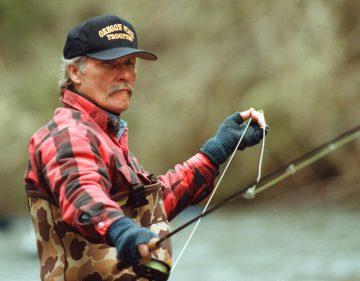 Have you ever wondered just how that salmon got to your table at the restaurant, or in the grocery store, or on your barbecue at home? Salmon not only have to swim through a lot of water, both fresh and salt, but a lot of regulations as well. But those regulations protect them, ensuring there will be salmon for future generations.The following outlines how conservation of salmon works, particularly for the Columbia River, the greatest salmon river of them all. It covers a century and a half of how people have coped with changes in the natural environment, fluctuations in fish populations, ocean conditions, pollution, control of fishing operations, as well as a host of other issues, by developing laws and structures that help ensure their survival. Read the op-ed here 12:33
Have you ever wondered just how that salmon got to your table at the restaurant, or in the grocery store, or on your barbecue at home? Salmon not only have to swim through a lot of water, both fresh and salt, but a lot of regulations as well. But those regulations protect them, ensuring there will be salmon for future generations.The following outlines how conservation of salmon works, particularly for the Columbia River, the greatest salmon river of them all. It covers a century and a half of how people have coped with changes in the natural environment, fluctuations in fish populations, ocean conditions, pollution, control of fishing operations, as well as a host of other issues, by developing laws and structures that help ensure their survival. Read the op-ed here 12:33
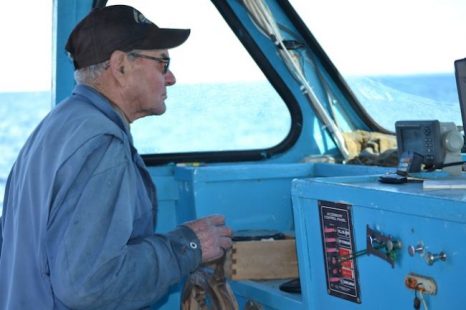
‘This is my life’- 71 years a fisherman and counting
Moving away from the wheel, Alcide Arsenault draws in a chest full of salt air. “This is what I like,” he says. His hands are thrust wide from his hips as he stands proudly on the deck of the Key West One, looking towards the few remaining stars in the first light of day. He’s been out on the water for nearly two hours and his crew, consisting of his son Kenneth and grandson Bradley, has already checked over 30 lobster traps. It’s late in the lobster season, but fishing’s still good and the veteran captain is pleased. He’s used to being in the stern of the boat, but his back has been giving him some trouble the past couple of years so he’s content to run the boat and allow his younger crew to do the heavy lifting. But even what they do is not how it used to be. “When I started fishing it was by hand. You had to pull everything up by hand. It wasn’t a great job but, well, it kept us in pretty good shape,” remarked Arsenault who consistently tips the scales at between 138 and 142 pounds. With 71 years of fishing experience, this 85-year-old Cape Egmont captain knows better than most present-day fishermen how it used to be. “We didn’t have anything then. We had a compass and that was it. Read the story here 11:39
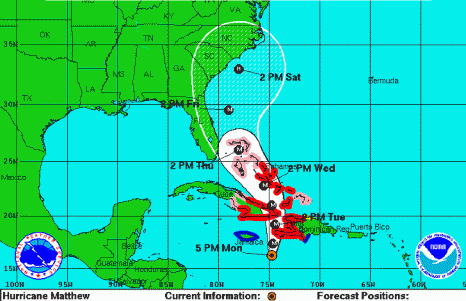
Hurricane Matthew Warnings Shift Toward Florida, Gov. Rick Scott declares a State of Emergency
At 800 AM EDT (1200 UTC), the eye of Hurricane Matthew was located inland Haiti near latitude 18.4 North, longitude 74.2 West. Matthew made landfall near Les Anglais about 700 AM EDT (1100 UTC). The hurricane is moving toward the north near 9 mph (15 km/h), and this general motion is expected to continue today. On this track the eye of Matthew will be back over water in the Gulf of Gonave in the next hour or so, and then move over the Windward Passage later this morning. A turn toward the north-northwest is expected by Wednesday, followed by a northwest turn Wednesday night. Read the rest here The alert warns that Matthew is expected to make a northwestern turn on Wednesday — and that hurricane-force winds are expected to reach up to 40 miles out from the eye of the storm. Meteorologists say Matthew is currently gusting 140 mph winds near its eye wall. Just before the warning was issued, Gov. Rick Scott declared a state of emergency in every county in Florida 09:41

Help for fishing vessels to locate their catch? Why be a fisherman?!!
Big Data means that professional fishermen will soon be getting their own decision-making tool. It will tell them where fish shoals are located, and how their vessels can be operated as economically as possible. Currently, fishermen set out for sea armed with a log book, their experience and intuition. But sometimes this isn’t enough and they return empty-handed. For some time now fishermen have wanted to obtain data that can help them better predict where fish can be found. And success may be just around the corner. Vessel owners Nordnes AS and Havfisk ASA have been in the forefront of work linked to the project called ESUSHI, carried out together with researchers from SINTEF. Fishing vessels, the supply industry, the Norwegian Meteorological Institute (NMI) and the Nansen Environmental and Remote Sensing Centre in Bergen are now supplying massive amounts of the data they have acquired as a basis for a decision-making tool. Read the story here 08:58
Coast Guard reports increase in seizures of Mexican vessels stealing Red Snapper
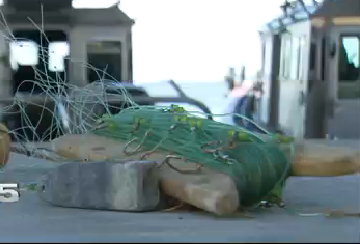 A recent study by the U.S. Coast Guard states hundreds of thousands of pounds of red snapper is taken illegally out of the waters by Mexican fishermen. U.S. fisherman Stephen Murphy said he knows they are after the red snapper. “You’re out there fishing and you look a mile away… It’s pretty obvious there’s a Mexican in a commercial boat out there with their long lines and gill nets bringing in thousands of pounds of fish,” he said. Murphy said the fishermen also use illegal catching nets. He said there needs to be more done to protect the fish. “There’s nobody out there patrolling… They can go out and fish for one night and get a thousand pounds of snapper,” he said. “(They’re) selling it for almost eight thousand dollars.” Video, read the story here 08:03
A recent study by the U.S. Coast Guard states hundreds of thousands of pounds of red snapper is taken illegally out of the waters by Mexican fishermen. U.S. fisherman Stephen Murphy said he knows they are after the red snapper. “You’re out there fishing and you look a mile away… It’s pretty obvious there’s a Mexican in a commercial boat out there with their long lines and gill nets bringing in thousands of pounds of fish,” he said. Murphy said the fishermen also use illegal catching nets. He said there needs to be more done to protect the fish. “There’s nobody out there patrolling… They can go out and fish for one night and get a thousand pounds of snapper,” he said. “(They’re) selling it for almost eight thousand dollars.” Video, read the story here 08:03
Capt. Keith Williams: New head of DEEP’s EnCon Marine Division
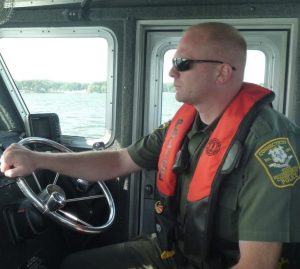 As the newly appointed head of the Marine Division of the state Department of Energy and Environmental Protection’s EnCon Police, Williams, 44, is in charge of keeping up with a wide array of regulations that change with the seasons across a large area of the state. “I’m a huge field guy,” said Williams. “I like to be involved in what the guys are doing.” Along with making sure recreational fishermen and boaters are following the laws for fishing seasons, no-wake zones and licensing, the Marine Division also conducts periodic checks of wholesale and retail seafood dealers to make sure the fish being sold meet state regulations,, and do periodic checks of the state’s commercial fishermen, based mainly in Stonington and New London. “I’ll check when they’re offloading, doing surprise checks at the dock,” he said. “We’ll go to the docks in Stonington frequently just to keep them honest, and let them know we’re out there.” Read the story here 19:33
As the newly appointed head of the Marine Division of the state Department of Energy and Environmental Protection’s EnCon Police, Williams, 44, is in charge of keeping up with a wide array of regulations that change with the seasons across a large area of the state. “I’m a huge field guy,” said Williams. “I like to be involved in what the guys are doing.” Along with making sure recreational fishermen and boaters are following the laws for fishing seasons, no-wake zones and licensing, the Marine Division also conducts periodic checks of wholesale and retail seafood dealers to make sure the fish being sold meet state regulations,, and do periodic checks of the state’s commercial fishermen, based mainly in Stonington and New London. “I’ll check when they’re offloading, doing surprise checks at the dock,” he said. “We’ll go to the docks in Stonington frequently just to keep them honest, and let them know we’re out there.” Read the story here 19:33

Maine fisheries experts head to Japan to learn scallop practices, buy machinery
Expanding on earlier visits to Japan, 10 aquaculture and fisheries experts from Maine are headed for Aomori Prefecture in the northern part of Japan’s main island of Honshu to learn successful techniques to grow scallops and to buy machinery to help harvest them. “Sea scallops are among the most lucrative commercial marine species caught in the United States,” Hugh Cowperthwaite, fisheries project director at Coastal Enterprises Inc. (CEI), of Portland and the trip leader, told Mainebiz as he was preparing to leave for Aomori last Friday. Over the Oct. 1-15 visit, Maine’s scallop experts will meet with the Aomori Prefecture Fisheries Research Institute to learn about the oceanographic effects of releasing scallop larvae as well as learn to use a spat harvester. They’ll also observe scallop and marine processing facilities and see cage cleaning at the Shimokita Product Market, plus visit various fisheries cooperative associations to get aquaculture equipment training. Read the story here, and watch the video 18:27
Mid-Atlantic Fishery Management Council meeting in Galloway, NJ, Oct 4-6, 2016 – Listen Live!
 The public is invited to attend the Mid-Atlantic Fishery Management Council’s October meeting to be held at the Stockton Seaview Hotel, 401 South New York Road, Galloway, NJ. Read the Council Meeting Agenda, For online access to the meeting, enter as a guest Click here 17:20
The public is invited to attend the Mid-Atlantic Fishery Management Council’s October meeting to be held at the Stockton Seaview Hotel, 401 South New York Road, Galloway, NJ. Read the Council Meeting Agenda, For online access to the meeting, enter as a guest Click here 17:20
Falklands squid catch dives from 350,000t to 2,000t, Argentina at 20-year low
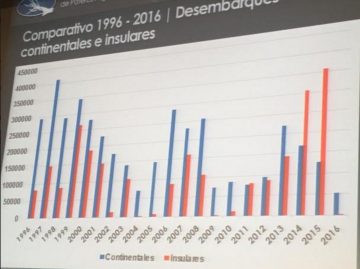 Juan Redini, president of the chamber of jiggers of Argentina, presented some shocking figures on squid catches in his country and also the Falkland Islands, during the cephalopod conference on the Monday before Conxemar. Argentina’s catches of squid for 2016 are just over 50,000 metric tons (see blue bars below) in 2016, with catches in the Falklands at around 2,000t (see red bars). In 2015, catches from Argentina’s vessels were around 110,000t, with the Falklands catching over 350,000t. This “massive trend downwards” has caused prices to rocket. According to a slide (see below) from Redini, prices were around $1,000/t in 2015, but have nearly doubled in 2016, with the massive drop in volumes. Read the rest here 16:33
Juan Redini, president of the chamber of jiggers of Argentina, presented some shocking figures on squid catches in his country and also the Falkland Islands, during the cephalopod conference on the Monday before Conxemar. Argentina’s catches of squid for 2016 are just over 50,000 metric tons (see blue bars below) in 2016, with catches in the Falklands at around 2,000t (see red bars). In 2015, catches from Argentina’s vessels were around 110,000t, with the Falklands catching over 350,000t. This “massive trend downwards” has caused prices to rocket. According to a slide (see below) from Redini, prices were around $1,000/t in 2015, but have nearly doubled in 2016, with the massive drop in volumes. Read the rest here 16:33
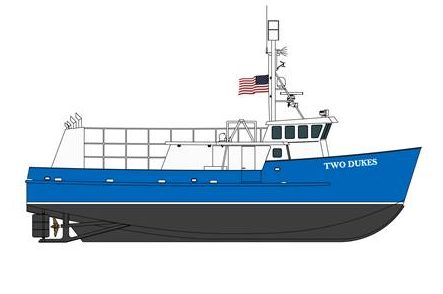
New Lobster Boat Under Construction in North Carolina
Custom Steel Boats, Inc. of Merritt, N.C., in collaboration with Ted & Todd’s Marine of Beaufort, N.C., announced a new construction project. Custom Steel Boats is building a 70-foot steel hull lobster boat, Two Dukes, for Captain Eric, Inc of Seaville, N.J. The vessel will be used in the waters off of New Jersey as well as North Carolina to catch lobster. The vessel was designed by DeJong and Lebet in Jacksonville, Fla. to meet the needs of the customer. Two more images, Read the rest here 16:16
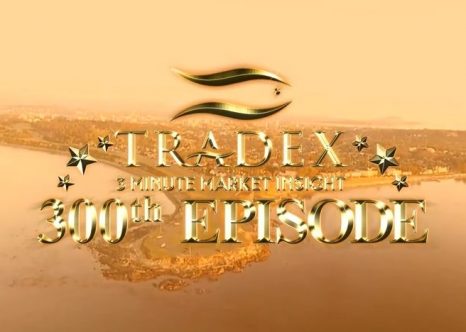
3-Minute Market Insight – What Happened to the Fraser River Sockeye Salmon? We ask DFO, Scientist and Fishermen
For this special 300th episode we dug deep to find answers for the question in the back of everyone’s mind – where has all the Fraser River Sockeye salmon gone? In the final in-season assessment of the Fraser River, the Pacific Salmon Commission reported parts of the Fraser at 2.5 degrees higher than average for this time of year, as well as 15 percent lower water discharge. We spoke with Angela Bates, the Area Director for Fraser and BC Interior at the Department of Fisheries and Oceans in Vancouver, to investigate recent spawning trends. We Asked: The lowest return on record since 1893 is expected this year – what are the factors? Click here to watch the video or click here to read the transcript. Congratulations to Tradex for their 300th episode! 15:18
Ruling forces discussions on breaching Snake River dams to save salmon
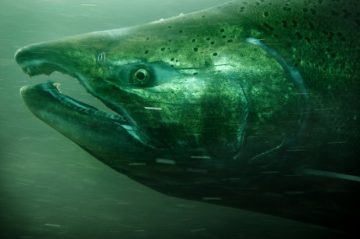 A federal judge is forcing discussion of a radical step to save endangered salmon: taking out four dams on the Lower Snake River. The public will get a chance to weigh in at meetings throughout the Northwest starting next month. “Scientists tell us that removing the four Lower Snake dams is the single most important action we could take to restore salmon in the entire Columbia-Snake river basin,” said Sam Mace of Save Our Wild Salmon. The four dams produce about 5 percent of the Northwest’s hydroelectric power. They allow barges to ship goods between Lewiston and Portland. But they also hamper salmon migration to some of the best remaining fish habitat. Read the story here 13:07
A federal judge is forcing discussion of a radical step to save endangered salmon: taking out four dams on the Lower Snake River. The public will get a chance to weigh in at meetings throughout the Northwest starting next month. “Scientists tell us that removing the four Lower Snake dams is the single most important action we could take to restore salmon in the entire Columbia-Snake river basin,” said Sam Mace of Save Our Wild Salmon. The four dams produce about 5 percent of the Northwest’s hydroelectric power. They allow barges to ship goods between Lewiston and Portland. But they also hamper salmon migration to some of the best remaining fish habitat. Read the story here 13:07


































